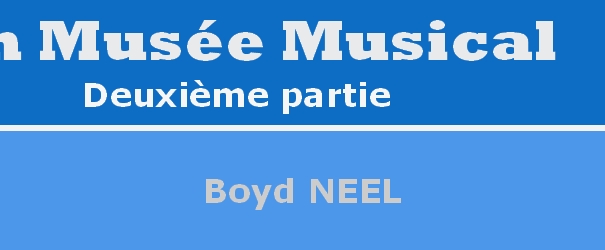Herbert HOWELLS
Élégie pour alto, quatuor à cordes et orchestre à cordes
Max GILBERT, alto
Boyd Neel String Orchestra
Boyd NEEL
8 mai 1939 (78 tours DR M484, M485)
Les oeuvres de Herbert HOWELLS couvrent de nombreux genres et comprennent un certain nombre d'oeuvres pour voix, cordes et piano, mais c'est avant tout pour son orgue et sa musique chorale sacrée que l'on se souvient le plus de lui. Cette Élégie pour alto, quatuor à cordes et orchestre à cordes date de 1917. Inspiré de la Fantaisie sur un thème de Thomas Tallis de Vaughan Williams, Howell composa cette courte oeuvre en hommage personnel à un camarade d'études du «Royal College of Music», tragiquement tué pendant la Première Guerre mondiale. L'oeuvre sert d'indicateur précoce aux oeuvres commémoratives ultérieures de Howell, et constitue une porte d'entrée vers certaines de ses oeuvres de chambre plus complexes.
L'Élégie reprend le mouvement central d'une oeuvre inédite en trois mouvements, la «Suite for String Orchestra», que Howells composa aux alentours de 1917. Sa première audition fut donnée au «Royal College of Music» sous la direction de Charles Villiers Stanford. L'oeuvre fut très appréciée et jouée dans tout le pays, en particulier à Londres: sa popularité fut importante pour Howells, car elle confirmait ses compétences et sa détermination à devenir compositeur à plein temps.
Une courte description citée des notes d'Alex BURN publiées en 2020 dans cette page du site classicalexburns.com:
"[...] Elegy begins with the solo viola oscillating around a G. This sensitive opening paves the way for nearly all the motivic material in the work. The motif is then imitated by the orchestra with full harmonisation, highlighting the development of the motif. The basis of this theme is moving in thirds, which is then kept as the underlying constant throughout the work. This technique is very Vaughan Williams-esque, with his works The Lark Ascending and Phantasy Quartet using similar orchestration ideas. This further cements the fact that Howells took much inspiration from his British contemporaries.
Howells constant adapting and developing of texture is one of the highlights of Elegy. From the distant solo opening, to using a full string orchestra and quartet, who are also split in parts to create even denser harmony, the texture is an ever-developing factor throughout the work. Howells’ use of solo and full tutti passages also support this idea. Using the string quartet Howells is able to create a much smaller sound due to having less players. By adding a soloist this creates scope for much more dynamic melodic lines. The string orchestra then add to the drama of the work by utilising Howells’ quintessentially British harmonic language and adding a depth of sound that supports the woody timbre of the viola.
The melancholic atmosphere carries throughout the work, with a few snapshots of hope developing through major-minor harmonising in the accompanying strings. The lower tone of the viola adds to this feeling of melancholy, with its moody timbre and slow tempo throughout. Howells also supports this atmosphere by his use of modal harmonisation, notably his use of the Phrygian mode. The use of modes was highly popular amongst British composers of the time, especially those who were contemporaries of Howells.
Final Thoughts
Elegy is a quintessential British work that foreshadowed Howells’ later musical output. Its solemn atmosphere represents the tribute to Howells’ friend who died in the war. The work was very personal to the composer, and became one of his most beloved works. Howells’ decision to use a string quartet, full string orchestra and a solo viola shows his willingness to experiment with various structures and timbres, which then feeds into the manipulation and delivery of melodies, modes and tonal harmony. Although the work offers a lot, it is seldom heard in today’s concert halls – a real shame indeed. [...]"
L'interprétation qui en est proposée sur cette page date du 8 mai 1939, enregistrée par Boyd NEEL avec son «Boyd Neel String Orchestra» et Max GILBERT à l'alto, publiée sur les 78 tours DR M484 et M485.
Comme pour toutes les oeuvres de Herbert HOWELLS, je ne peux vous proposer l'enregistrement de cette oeuvre qu'en écoute par l'intermédiaire d'un iframe embarqué du splendide site archive.org, plus exactement de cette page - ses oeuvres ne tombant dans le domaine publique qu'en 2054...
Herbert Howells, Élégie pour alto, quatuor à cordes et orchestre à cordes, Max Gilbert, alto, Boyd Neel String Orchestra, Boyd Neel, 8 mai 1939 (78 tours DR M484, M485)
Quasi Lento, teneramente
Provenance: Radiodiffusion, cette page du site archive.org



